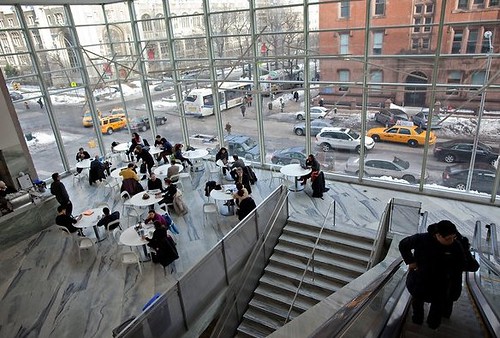Cafe, Columbia University Science Building, New York City
I blogged over the weekend about how some universities are relocating their bookstores to locations in the adjacent community, in order to provide more connections between town and gown, and to strengthen the offer in commercial districts--after all, bookstores, sadly, are a dying breed. (The Wall Street Journal article on Borders' bankruptcy suggests that either the company will go out of business entirely or that hundreds of stores will be closed. See "Borders Nearing Bankruptcy Filing.")
An article in the New York Times, "A Building Forms a Bridge Between a University’s Past and Future," mentions how the cafe in the new science building at Columbia University is designed to do something similar. From the article:
The lobby interior is clad in richly veined Portuguese marble, the kind of sumptuous material that Loos used to lessen the severity of his spaces. A stair, in the same marble, ascends to a mezzanine-level cafe that overlooks the street through floor-to-ceiling windows: a kind of interstitial zone floating just above the city. From there, more stairs lead up to a campus-level lobby, 35 feet above the street. (All these spaces are open to the public.)

Cafe, Columbia University Science Building. Photo: Robert Caplin for The New York Times.
Labels: commercial district revitalization, restaurants, university-community revitalization, urban design/placemaking



0 Comments:
Post a Comment
<< Home